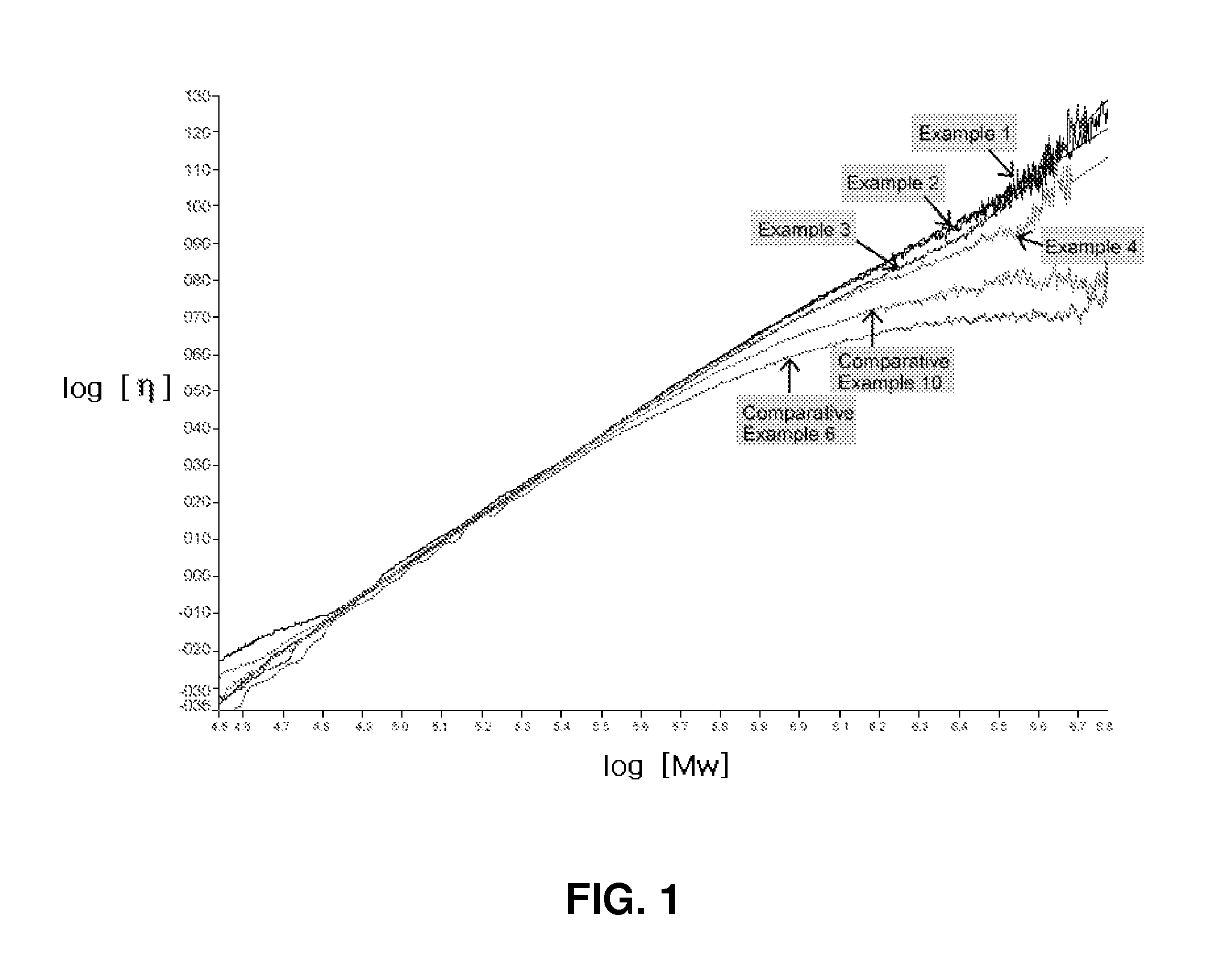Method for Control of the Degree of Branch of Polybutadiene with High 1,4-CIS Content
a polybutadiene and content technology, applied in the field of controlling the degree of branching of polybutadiene with a high 1,4-cis content, can solve the problems of poor workability, difficulty in handling during packaging, transfer and storage, and unsatisfactory physical properties, so as to reduce monomer concentration, increase cost, and reduce the effect of productivity
- Summary
- Abstract
- Description
- Claims
- Application Information
AI Technical Summary
Benefits of technology
Problems solved by technology
Method used
Image
Examples
example 1
[0038]The Ziegler-Natta catalyst used in the reaction was prepared by mixing nickel naphthenate (0.05% toluene solution), boron trifluoride diethyl ether (1.5% toluene solution), and triethylaluminum (0.8% toluene solution) in the absence or presence of a small quantity of 1,3-butadiene. The nickel catalyst was used in an amount of 6.81×10−5 mol based on 100 g of monomers.
[0039]Then, a polybutadiene with a high 1,4-cis content was prepared by, after sufficiently purging a 360-mL pressurized reactor with nitrogen, adding the monomer 1,3-butadiene to a polymerization solvent comprising cyclohexane, heptanes, and toluene at 8:1:1 based on weight, and then sequentially adding the nickel naphthenate, the triethylaluminum, and the boron trifluoride diethyl ether to the polymerization reactor without aging pretreatment.
[0040]The ratio of the amount of the polymerization solvent to the monomer was 5. When the reaction was completed, 2,6-di-t-butylylene glycol, polyoxyethylene glycol phospha...
example 2
[0042]A polybutadiene with a high 1,4-cis content was prepared in the same manner as in Example 1, except for changing the addition amount of the catalyst components as described in Table 1 with the same catalyst combination. Physical properties of the resulting polybutadiene are given in Table 1.
example 3
[0043]A polybutadiene with a high 1,4-cis content was prepared in the same manner as in Example 1, except for aging the triethylaluminum and the boron trifluoride diethyl ether in a catalyst aging reactor at 20° C. for 1 hour and then adding to the polymerization reactor together with the nickel naphthenate. Physical properties of the resulting polybutadiene are given in Table 1.
PUM
| Property | Measurement | Unit |
|---|---|---|
| molar ratio | aaaaa | aaaaa |
| molecular weight distribution | aaaaa | aaaaa |
| molecular weight distribution | aaaaa | aaaaa |
Abstract
Description
Claims
Application Information
 Login to View More
Login to View More - R&D
- Intellectual Property
- Life Sciences
- Materials
- Tech Scout
- Unparalleled Data Quality
- Higher Quality Content
- 60% Fewer Hallucinations
Browse by: Latest US Patents, China's latest patents, Technical Efficacy Thesaurus, Application Domain, Technology Topic, Popular Technical Reports.
© 2025 PatSnap. All rights reserved.Legal|Privacy policy|Modern Slavery Act Transparency Statement|Sitemap|About US| Contact US: help@patsnap.com


